| Date | Text | |
|---|---|---|
30 Nov 1886

Theodor von Oppolzer |
Theodor von Oppolzer (astronomy) Theodor von Oppolzer's Canon der Finsternisse, a compilation of the 8,000 solar and 5,200 lunar eclipses from 1200 BC until 2161 AD, is published posthumously. |
|
30 Nov 1886

Jean Pierre Mégnin |
Jean Pierre Mégnin (biology) Jean Pierre Mégnin publishes Faune des Tombeaux ("Fauna of the Tombs"), the founding work of modern forensic entomology. |
|
30 Nov 1886

Sergei Winogradsky |
Sergei Winogradsky (biology) Sergei Winogradsky discovers the first known form of lithotrophy during his research with Beggiatoa. |
|
30 Nov 1886

Guyou hemisphere-in-a-square projection |
Guyou hemisphere-in-a-square projection (cartography) Guyou hemisphere-in-a-square projection developed by Émile Guyou. |
|
30 Nov 1886

Hawaii |
Hawaii (earth sciences) In Hawaii, the Mauna Loa volcano eruptions subside, having begun in 1843. During the 1887 eruption, about 2½ million tons (2.3 million metric tons) of lava per hour pours out, covering an area of 29 km². |
|
30 Nov 1886

Joseph Louis François Bertrand |
Joseph Louis François Bertrand (mathematics) Joseph Louis François Bertrand rediscovers Bertrand's ballot theorem. |
|
30 Nov 1886

Henri Poincaré |
Henri Poincaré (mathematics) Henri Poincaré provides a solution to the three-body problem. |
|
30 Nov 1886

Franz König |
Franz König (medicine) Franz König publishes "Über freie Körper in den Gelenken" in the journal Deutsche Zeitschrift für Chirurgie, first describing (and naming) the disease Osteochondritis dissecans. |
|
30 Nov 1886

Hospitals Association |
Hospitals Association (medicine) The Hospitals Association establishes the first (non-statutory and voluntary) register of nurses in the United Kingdom. |
|
30 Nov 1886
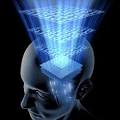
parapsychology |
parapsychology (psychology) Richard Hodgson and S. J. Davey, in the course of investigations into popular belief in parapsychology, publish one of the first descriptions of eyewitness unreliability. |
|
30 Nov 1886

Adolf Gaston Eugen Fick |
Adolf Gaston Eugen Fick (technology) Adolf Gaston Eugen Fick invents the contact lens, made of a type of brown glass. |
|
30 Nov 1886

Mexican |
Mexican (technology) Mexican general Manuel Mondragón patents the Mondragón rifle, the world's first automatic rifle. |
|
30 Nov 1886

Alfred Yarrow |
Alfred Yarrow (technology) Alfred Yarrow completes the first practical high-pressure water-tube Yarrow boiler, for a torpedo boat. |
|
30 Nov 1886

Barcelona |
Barcelona (publications) Publication in Barcelona of Enrique Gaspar's El anacronópete, the first work of fiction to feature a time machine. |
|
30 Nov 1886
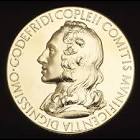
Copley Medal |
Copley Medal (awards) Copley Medal: Joseph Dalton Hooker |
|
30 Nov 1886
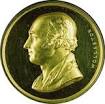
Wollaston Medal |
Wollaston Medal (awards) Wollaston Medal for Geology: John Whitaker Hulke |
|
30 Nov 1886

Old Style |
birth Old Style November 25 (November 13 Old Style) – Nikolai Vavilov (died 1943), Russian plant pathologist. |
|
30 Nov 1886

Lev Tsenkovsky |
death Lev Tsenkovsky October 7 (O.S. September 25) – Lev Tsenkovsky (born 1822), Russian biologist. |
|
11 Jan 1887
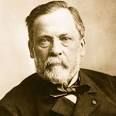
Louis Pasteur |
Louis Pasteur (medicine) Louis Pasteur's anti-rabies treatment is defended in the French Academy of Medicine by Dr. Joseph Grancher. |
|
15 Jan 1887

Henry Fairfield Osborn, Jr. |
birth Henry Fairfield Osborn, Jr. Henry Fairfield Osborn, Jr. (died 1969), American conservationist. |
|
22 Jan 1887

Joseph Whitworth |
death Joseph Whitworth Joseph Whitworth (born 1803), English mechanical engineer. |
|
28 Jan 1887
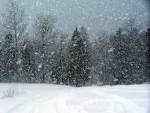
snowstorm |
snowstorm (climate) In a snowstorm at Fort Keogh, Montana, in the United States, the largest snowflakes on record are reported. They are 15 inches (38 cm) wide and 8 inches (20 cm) thick. |
|
28 Jan 1887
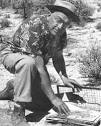
Edmund Jaeger |
birth Edmund Jaeger Edmund Jaeger (died 1983), American naturalist |
|
23 Feb 1887

French Riviera |
French Riviera (earth sciences) The French Riviera is hit by a large earthquake, killing around 2,000 along the coast of the Mediterranean Sea. |
|
26 Feb 1887

Anandi Gopal Joshi |
death Anandi Gopal Joshi Anandi Gopal Joshi (born 1865), Indian physician. |
|
03 Mar 1887

Anne Sullivan |
Anne Sullivan (linguistics) Anne Sullivan begins to teach language to the deaf and blind Helen Keller. |
|
07 Mar 1887
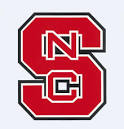
North Carolina State University |
North Carolina State University (organizations) North Carolina State University is established as North Carolina College of Agriculture and Mechanic Arts. |
|
08 Mar 1887
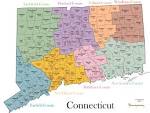
Connecticut |
Connecticut (technology) Everett Horton of Connecticut patents a fishing rod of telescoping steel tubes. |
|
13 Mar 1887

Chester Greenwood |
Chester Greenwood (technology) Chester Greenwood patents earmuffs. |
|
01 Apr 1887
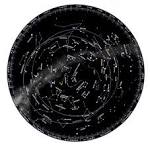
Carte du Ciel |
Carte du Ciel (astronomy) Carte du Ciel project initiated by Paris Observatory director Amédée Mouchez. |
|
20 Apr 1887

Margaret Newton |
birth Margaret Newton Margaret Newton (died 1971), Canadian plant pathologist. |
|
29 May 1887

L. L. Thurstone |
birth L. L. Thurstone Born 29 May 1887; died 29 Sep 1955 at age 68. L(ouis) L(eon) Thurstone was an American psychologist who improved psychometrics, the measurement of mental functions, and developed statistical techniques for multiple-factor analysis of performance on psychological tests. In high school, he published a letter in Scientific American on a problem of diversion of water from Niagara Falls; and invented a method of trisecting an angle. At university, Thurstone studied engineering. He designed a patented motion picture projector, later demonstrated in the laboratory of Thomas Edison, with whom Thurstone worked briefly as an assistant. When he began teaching engineering, Thurstone became interested in the learning process and pursued a doctorate in psychology. |
|
01 Jun 1887
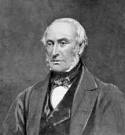
William Armstrong |
William Armstrong (awards) William Armstrong created 1st Baron Armstrong of Cragside, the first engineer to be raised to the Peerage of the United Kingdom |
|
08 Jun 1887

Herman Hollerith |
Herman Hollerith (technology) Herman Hollerith receives a U.S. patent for his punched card calculator. |
|
22 Jun 1887

Sir Julian Huxley |
birth Sir Julian Huxley Born 22 Jun 1887; died 14 Feb 1975 at age 87. quotes Julian Sorell Huxley was an English biologist and writer, philosopher, and educator who greatly influenced the modern development of embryology, systematics, and studies of behaviour and evolution. He studied the differential growth of different body parts, Problems of Relative Growth (1932). He wrote many popular articles and essays, especially on ornithology and evolution, and co-produced several history films, including the Private Life of the Gannet (1934). No stranger to controversy, Huxley supported the contentious view that the human race could benefit from planned parenthood using artificial insemination by donors of “superior characteristics.” (He was the grandson of biologist Thomas H. Huxley and brother of Aldous Huxley.) |
|
22 Jun 1887
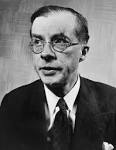
Julian Huxley |
birth Julian Huxley Julian Huxley (died 1975), English biologist and populariser of science. |
|
23 Jun 1887

Rocky Mountains Park Act |
Rocky Mountains Park Act (conservation) The Rocky Mountains Park Act becomes law in Canada, creating that nation's first national park, Banff National Park. |
|
01 Jul 1887

James Blyth |
James Blyth (technology) James Blyth operates the first working wind turbine at Marykirk in Scotland. |
|
13 Jul 1887

New Tay Bridge opened |
New Tay Bridge opened In 1887, the second Tay Rail Bridge was opened in Scotland, and remains in use today. Building was started in 1881 to replace the original single-track railway which had collapsed in a disaster on 28 Dec 1879 due to poor design and construction. The new bridge was designed for a double-track railway by William Henry Barlow and William Arrol on new, stronger piers within 60-ft (18-m) of the first. The stumps of the old piers remain as a breakwater. Many of the undamaged original girders together with new steelwork were incorporated into the new structure with a greater width to improve its lateral stability. On 18 Aug 1966, the Tay Road Bridge was opened by the Queen Mother to finally replace the ferry crossing of the Firth of Tay. |
|
15 Jul 1887

Lee Raymond Dice |
birth Lee Raymond Dice Born 15 Jul 1887; died 31 Jan 1977 at age 89. American zoologist, geneticist and ecologist who introduced biotic provinces to characterize areas of continuous ecological similarity in climate, soils, and topography. He investigated geographical and ecological distribution pertaining to plants and animals in fieldwork throughout the Southwest and Mexico in the 1920s and 30s. When he found C. Hart Merriam's idea of life zones to be inadequate for modeling distribution patterns, he developed his concept of biotic provinces. Dice demonstrated their application in his book, The Biotic Provinces of North America (1943). He is also known for his derivation of the Dice index, a similarity coefficient used to measure degree of association between biotic samples. |
|
19 Jul 1887
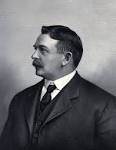
Dorr Eugene Felt |
Dorr Eugene Felt (technology) Dorr Eugene Felt receives the first U.S. patent for his comptometer. |
|
26 Jul 1887
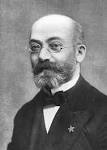
L. L. Zamenhof |
L. L. Zamenhof (linguistics) L. L. Zamenhof publishes Lingvo internacia ("International language") under the pseudonym "Doktoro Esperanto". |
|
01 Aug 1887

National Institutes of Health |
National Institutes of Health (medicine) The U.S. National Institutes of Health is founded at the Marine Hospital, Staten Island, NY, as the Laboratory of Hygiene. |
|
01 Aug 1887
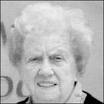
Anna Connelly |
Anna Connelly (technology) Anna Connelly patents the fire escape. |
|
15 Aug 1887

Julius von Haast |
death Julius von Haast Julius von Haast (born 1824), German geologist. |
|
18 Aug 1887
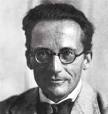
Erwin Schrödinger |
birth Erwin Schrödinger Erwin Schrödinger (died 1961), Austrian physicist. |
|
23 Aug 1887

Bradley Dewey |
birth Bradley Dewey Born 23 Aug 1887; died 14 Oct 1974 at age 87. American chemical engineer, industrialist and inventor. |
|
14 Sep 1887

Karl Taylor Compton |
birth Karl Taylor Compton Born 14 Sep 1887; died 22 Jun 1954 at age 66. American educator and physicist who directed development of radar during WW II. His research included the passage of photoelectrons through metals, ionization and the motion of electrons in gases, fluorescence, the theory of the electric arc, and collisions of electrons and atoms. In 1933, President Roosevelt asked him to chair the new Scientific Advisory Board. When the National Defense Research Committee was formed in 1940, he was chief of Division D (detection: radar, fire control, etc.) In 1941, he was in charge of those divisions concerned with radar within the new Office of Scientific Research and Development (OSRD). Afterwards he was cited for personally shortening the duration of the war. He was the first recipient William Procter Prize for Scientific Achievement, and brother of Arthur H. Compton. |
|
26 Sep 1887
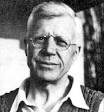
Barnes Wallis |
birth Barnes Wallis Barnes Wallis (died 1979), English aeronautical engineer. |
|
28 Sep 1887

Yellow River |
Yellow River (climate) Start of the Yellow River floods in China: 900,000 dead. |
|
30 Sep 1887
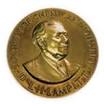
Leslie H. Lampitt |
birth Leslie H. Lampitt Born 30 Sep 1887; buried 3 Jun 1957 at age 69. Leslie Herbert Lampitt was an English analytical chemist and food scientist who as chief chemist of Lyons founded the largest food laboratory in Europe. After WW I service, his suggestion to Samuel Gluckstein of the food company J. Lyons & Co. that science should be applied to food production was accepted. Begining in Jul 1919, he founded a 3,000 sq. ft. Bio-Chemical Department, a laboratory analyzing food samples that was the first of its kind in Europe. As the staff and activity grew, by 1928, the lab had 35,000 sq.ft. in a new seven-story building. In Jun 1949, Oxford graduate Margaret Roberts joined as a research chemist, but later as Margaret Thatcher, she became Britain's first woman Prime Minister. Lampitt was active in several chemistry societies, both academic and industrial. He advocated standards for such products as tea, coffee, jam, cream and cheese. |
|
01 Oct 1887
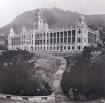
Hong Kong College of Medicine for Chinese |
Hong Kong College of Medicine for Chinese (medicine) Hong Kong College of Medicine for Chinese founded by Patrick Manson. |
|
03 Oct 1887
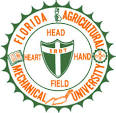
Florida A&M University |
Florida A&M University (organizations) Florida A&M University opens its doors in Tallahassee, Florida. |
|
11 Oct 1887
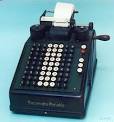
Adding machine |
Adding machine In 1887, a patent for the adding machine was granted to Dorr Eugene Felt of Chicago, Illinois. His Comptometer was the first practical key-driven calculator with sufficient speed, reliablility and economic benefit. He called his original prototype the "Macaroni box", a rough model that Felt created over the year-end holidays in 1884-85. The casing was a grocery macaroni box, assembled with a jackknife using meat skewers as keys, staples as key guides and elastic bands for springs. Door improved his design, producing his earliest commercial wooden-box Comptometer from 1887 thru 1903, leading to the first steel case Model A (1904 that would be standard for the remainder for all "shoebox" models. Electric motor drive was introduced in the 1920's. |
|
17 Oct 1887

Gustav Kirchhoff |
death Gustav Kirchhoff Gustav Kirchhoff (born 1824), German physicist. |
|
01 Nov 1887
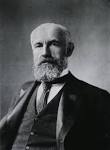
G. Stanley Hall |
G. Stanley Hall (psychology) G. Stanley Hall founds The American Journal of Psychology. |
|
08 Nov 1887

Emile Berliner |
Emile Berliner (technology) Emile Berliner is granted a U.S. patent for his Gramophone. |
|
18 Nov 1887
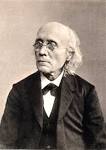
Gustav Fechner |
death Gustav Fechner Gustav Fechner (born 1801), German psychologist. |
|
19 Nov 1887

James B. Sumner |
birth James B. Sumner Born 19 Nov 1887; died 12 Aug 1955 at age 67. James Batcheller Sumner was an American biochemist who shared (with John Howard Northrop and Wendell Meredith Stanley) the 1946 Nobel Prize for Chemistry. Sumner was the first to crystallize an enzyme to show that enzymes were proteins. He learned to live one-handed from age 17, due to an accident. After earning his Ph.D. (1914), he joined the faculty of Cornell University Medical College. By 1917, he began investigating the protein nature of enzymes. It was technically difficult, taking nine years, before he produced a crystalline globulin with high urease activity in 1926. The significance of his work went unappreciated for a number of years, but by 1946, he was awarded a half-share of the Nobel Prize for Chemistry, “for his discovery that enzymes can be crystallized.” In 1947 he became director of a new laboratory for enzyme chemistry, at Cornell. |
|
20 Nov 1887

Earnest A. Hooton |
birth Earnest A. Hooton Born 20 Nov 1887; died 3 May 1954 at age 66. Earnest Albert Hooton was an American physical anthropologist and primatologist who investigated human evolution and racial differentiation, classified and described human populations, and examined the relationship between personality and physical type, particularly with respect to criminal behaviour. He established Harvard University as a principal U.S. centre for physical anthropology. In the 1930s, he studied American criminals, and in his controversial books, The American Criminal (1939) and Crime and the Man (1939), he sought to to connect criminal behaviour with physical or racial factors. His books written for the layperson include: Up from the Ape; Apes, Men and Morons; and Twilight of Man, Why We Behave Like Apes and Vice Versa. |
|
23 Nov 1887

Henry Moseley |
birth Henry Moseley Henry Moseley (killed 1915), English physicist. |
|
13 Dec 1887
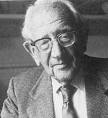
George Pólya |
birth George Pólya George Pólya (died 1985), Hungarian mathematician. |
|
22 Dec 1887

Ferdinand Vandiveer Hayden |
death Ferdinand Vandiveer Hayden Died 22 Dec 1887 at age 58 (born 7 Sep 1829). American geologist and explorer of the U.S. West. After finishing a medical school training (1853), his early career began in paleontology for James Hall, collecting fossils in the Badlands and the Upper Missouri Valley. It is believed he made the first North American discovery of dinosaur remains (1854) during this expedition. During the Civil War, he served as a surgeon in the Civil War, after which he resumed his western explorations. His work in the Great Plains and Rocky Mountains helped lay the foundation of the U.S. Geological Survey. Hayden is credited with having the Yellowstone geyser area declared the first national park (1872). He hosted the Western botanical journey of Gray and Hooker in 1877. |
|
22 Dec 1887

Srinivasa Ramanujan |
birth Srinivasa Ramanujan Born 22 Dec 1887; died 26 Apr 1920 at age 32. Srinivasa Aiyangar Ramanujan was an Indian mathematician who did notable work on hypergeometric series and continued fractions. In number theory, he discovered properties of the partition function. Although self-taught, he was one of India's greatest mathematical geniuses. He worked on elliptic functions, continued fractions, and infinite series. His remarkable familiarity with numbers, was shown by the following incident. While Ramanujan was in hospital in England, his Cambridge professor, G. H. Hardy, visited and remarked that he had taken taxi number 1729, a singularly unexceptional number. Ramanujan immediately responded that this number was actually quite remarkable: it is the smallest integer that can be represented in two ways by the sum of two cubes: 1729=13+123=93+103. |
|
27 Dec 1887

Edward Andrade |
birth Edward Andrade Edward Andrade (died 1971), English physicist. |